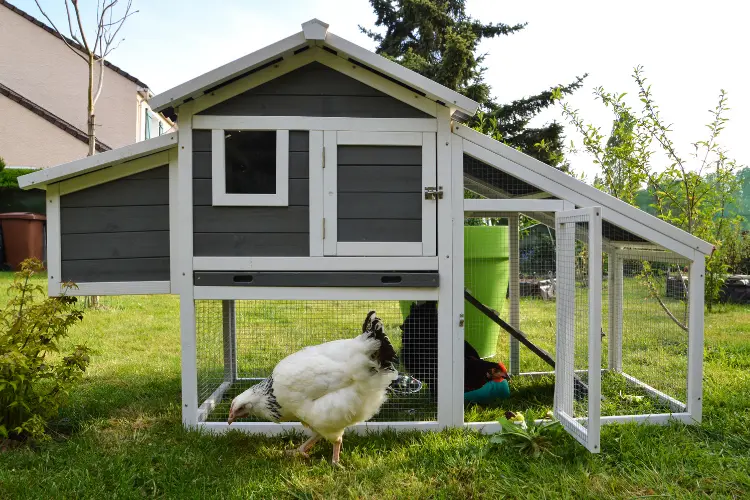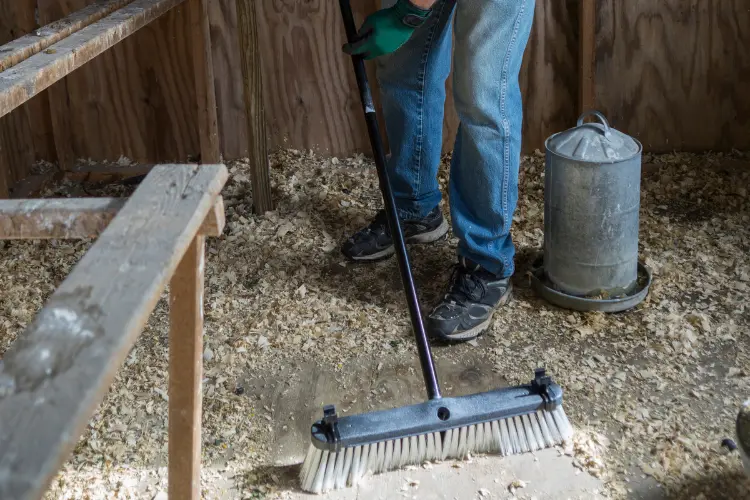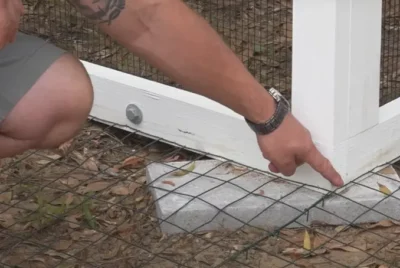How to Build a Chicken Coop from a Shed in 2023
Have you ever dreamt of having your own backyard chicken coop? What if we told you that you could transform your old garden shed into a haven for your feathered friends? That’s right! With a little creativity and effort, you can turn an unused shed into a functional and cozy chicken coop.
In this blog post, I’ll guide you through the step-by-step process of building a chicken coop from a shed, ensuring the safety and comfort of your chickens while saving money and adding a personal touch.
Table of Contents
Why Choose a Shed for Your Chicken Coop
Converting a shed into a chicken coop comes with numerous benefits:
- It’s cost-effective, as you’re repurposing an existing structure instead of building a new one from scratch.
- It provides protection from harsh weather conditions and predators. With a few extra latches on doors and windows, you can keep your chickens safe from unwanted visitors.
- The customization options are endless, allowing you to create a unique and comfortable environment for your flock.
Aside from protection and customization, a shed-turned-coop offers other practical advantages, such as:
- Easy access for cleaning, feeding, and collecting eggs
- Monitoring chicken behavior and health more closely
- Ensuring safety and comfort with proper nest boxes
Keeping your chickens in a designated area near your home helps you monitor their behavior and health more closely, ensuring their safety and comfort with proper nest boxes. Ready to convert your shed into a fantastic chicken coop?
Step 1: Preparing the Shed for Conversion

Before we delve into the customization of the coop, it’s important to prepare your shed for the transformation. This involves inspecting the structure, cleaning and sanitizing the shed, and leveling and elevating it off the ground.
These initial steps will create a safe and healthy foundation for raising backyard chickens, allowing your baby chicks to thrive in their new home and eventually providing you with fresh eggs.
Inspecting the Structure
Begin by checking your shed for any damage, infestations, or required repairs. You need to confirm that the shed is structurally sound, which will facilitate its reinforcement and protection against predators.
Strengthening the shed not only protects your farm eggs and chickens but also gives you peace of mind, knowing that your flock is safe and secure at night.
Cleaning and Sanitizing
After inspecting the shed, proceed to clean and sanitize it thoroughly. This important step eliminates dirt, debris, and possible disease sources, creating a safe and healthy environment for your chickens.
Equip yourself with soap, water, and a scrub brush to make the shed squeaky clean and ready for its transformation.
Leveling and Elevating the Shed
To prevent rotting and deter predators, it’s necessary to have a leveled and elevated shed. Use sand to level the ground beneath the shed and concrete blocks to create a strong and secure base.
Raising the shed off the ground not only has fresh air and protects it from moisture and decay but also adds an extra layer of security against burrowing predators.
Step 2: Essential Chicken Coop Features

Now that the shed is ready, the next step is to incorporate the key features of a functional chicken coop. These include:
Roosting Bars
Roosting bars play a key role in ensuring the comfort and well-being of your chickens. These cozy perches provide a safe space for your chickens to rest and sleep at night, away from the ground, which helps protect them from bacteria and parasites.
Get creative with your roosting bars by building a multi-leveled roost, a straight long roost, or even a ladder in a corner for your chickens to enjoy.
Nesting Boxes
For a successful chicken coop, knowing how many chickens you have is essential, as nesting boxes are key, offering all the hens with a cozy and safe environment for egg laying.
Make sure to have at least one nest box for every 4-5 hens, as this ensures a smooth egg-laying process and prevents overcrowding. So, how many nest boxes should you include? Having a few nest boxes in your chicken coop will greatly improve the overall experience for your hens.
You can add a personal touch to the nesting boxes by framing out the opening of the nesting box or adding a lip to make it easier for your hens to enter.
Ventilation and Lighting
Adequate ventilation and lighting are of utmost importance for the health and happiness of your chickens. Installing windows, vents, or fans in the coop helps regulate temperature, humidity, and air quality while preventing bacterial and mold growth.
Additionally, windows allow natural light to enter the coop, which is essential for your chickens’ well-being. Don’t forget to add screens to the windows to protect your flock from pests and insects.
Curious about what else you might add to optimize your coop further? Dive into my blog post about what should be inside a chicken coop today to discover unique, useful items that are often overlooked in typical coop designs. These insights will not only enhance your current setup but also bring unseen benefits to your feathery friends.
Step 3: Securing the Coop Against Predators

Protecting your chickens from potential predators is a top priority when transforming a shed into a chicken coop. This involves reinforcing entry points, installing predator-proof flooring, and creating a secure outdoor run for your chickens to roam and forage safely.
We’ll now delve into these important security measures to ensure your coop stands as a fortress against unwanted intruders.
Reinforcing Entry Points
Reinforcing doors, windows, and other entry points, such as the chicken coop door, is an important step in making your chicken coop secure. Add a couple extra latches and layers of wood, metal, or other materials to reinforce these areas and keep predators at bay.
Don’t forget to add locks, latches, and other security measures to ensure the utmost protection for your chickens.
Predator-Proof Flooring
Installing secure flooring is paramount in preventing burrowing predators like foxes, raccoons, and skunks from accessing your chicken coop. Although concrete is the most secure option, you can also opt for more affordable alternatives like wire mesh and hardware cloth to protect your chickens from unwanted visitors.
Secure Outdoor Run
Providing a safe and secure chicken run allows your chickens to roam and forage in a protected environment. To construct an outdoor run, you can follow these steps:
Select the perfect spot for your outdoor run.
Measure and mark the area where you want to build the run.
Use chicken wire or other fencing materials to build a sturdy enclosure.
By following these steps, you can create a safe and enjoyable outdoor space for your chickens. Regularly inspect the fencing and keep the area clean to ensure the run remains secure and well-maintained.
Read also: How to Build a Safe Chicken Run
Step 4: Interior Design and Organization

With your own chicken coop now secure and fitted with necessary features, the focus shifts to the interior design and organization of chicken coops. A well-organized coop ensures optimal functionality and cleanliness for your chickens.
Feed and Water Stations
Setting up efficient feed and water stations in your chicken coop minimizes waste and keeps the coop clean. You can install a DIY mesh chicken watering system or use hanging feeders and brackets to mount the feeder at the correct height.
Regularly inspect the feeders and waterers for any wear or contamination, and clean and refill them as needed to ensure your chickens always have access to fresh feed and water.
Dropping Boards and Cleaning
Adding dropping boards under roosting bars is an excellent way to maintain a clean and hygienic environment in your chicken coop. These boards collect droppings for easy disposal, helping to keep the coop tidy and fresh.
Use a garden trowel or cat litter scoop to quickly remove droppings and add them to your compost pile. Dropping boards are a simple yet effective solution for keeping your coop clean and your chickens happy.
If you’re still on the hunt for the perfect coop design or seeking insights on various coop features, don’t miss our Best Chicken Coop for 10 Chickens review article. It’s packed with valuable information to guide you in making the best choice for your feathery friends.
Step 5: Adding Personal Touches

With the fundamentals in place, now comes the stage to sprinkle some personal touches to your chicken coop. Customizing the coop with paint, decorations, and other unique elements not only makes it more visually appealing but also creates a welcoming environment for your chickens.
Let your creativity shine as you transform your garden shed into a one-of-a-kind chicken coop that reflects your personality and style.
Step 6: Maintenance and Upkeep

Regular upkeep and seasonal modifications are key to maintaining your chicken coop in top shape and ensuring the well-being and happiness of your chickens. By establishing a cleaning schedule and making necessary adjustments based on seasonal changes, you can maintain a clean and comfortable environment for your flock year-round.
Cleaning Schedule
Implementing a routine cleaning schedule is pivotal to ensuring a clean and healthy habitat for your chickens. A consistent routine, such as cleaning once a week or once a month, helps reduce the risk of disease and parasites and keeps the coop smelling fresh and inviting.
Equip yourself with a broom, dustpan, bucket, disinfectant, and gloves to make the cleaning process efficient and thorough.
Seasonal Adjustments
Adapting your chicken coop based on seasonal changes is crucial for the well-being of your chickens. For example, adding insulation during cold months keeps the coop warm, while adjusting ventilation in the hot, humid summer days ensures a comfortable temperature.
Regularly inspect your coop and make adjustments as needed to create the ideal living conditions for your chickens, no matter the season.
Read also: Is It Cheaper to Buy or Build a Chicken Coop? 2023 Edition
Transform Your Shed Now
Transforming a garden shed into a chicken coop is a rewarding and cost-effective project that provides a safe and comfortable home for your backyard chickens. By following the steps outlined in this blog post, you can create a functional and attractive chicken coop that meets your needs and reflects your personal style.
Don’t be afraid to get creative and add personal touches to your new coop either. With proper maintenance and seasonal adjustments, your chicken coop will be a thriving environment for your chickens to roam, forage, and lay eggs while providing you with the joy and satisfaction of raising your own backyard flock.
Feeling inspired to build your own shed? Find the perfect design in our selection of shed plans.





